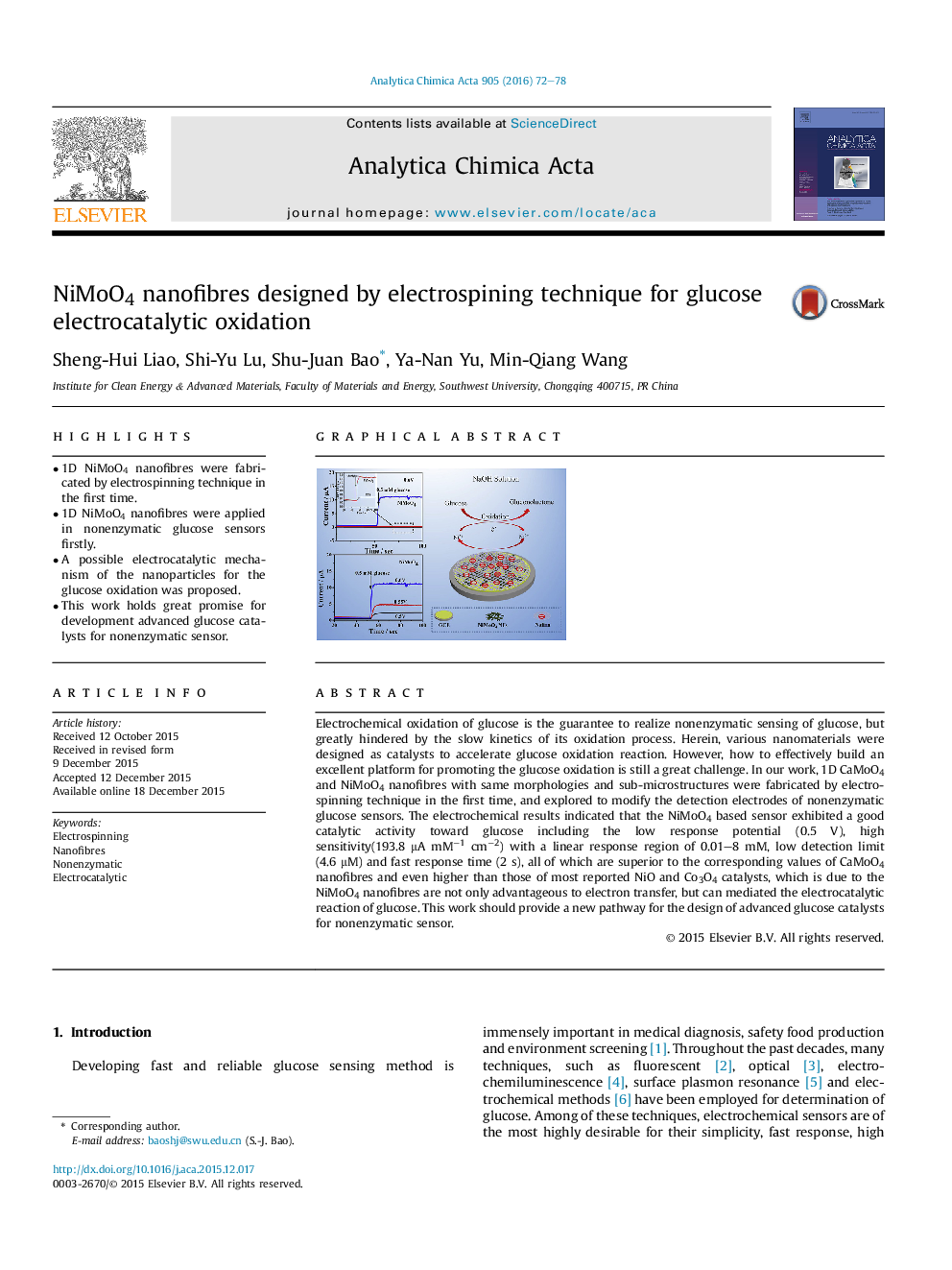| Article ID | Journal | Published Year | Pages | File Type |
|---|---|---|---|---|
| 1163172 | Analytica Chimica Acta | 2016 | 7 Pages |
•1D NiMoO4 nanofibres were fabricated by electrospinning technique in the first time.•1D NiMoO4 nanofibres were applied in nonenzymatic glucose sensors firstly.•A possible electrocatalytic mechanism of the nanoparticles for the glucose oxidation was proposed.•This work holds great promise for development advanced glucose catalysts for nonenzymatic sensor.
Electrochemical oxidation of glucose is the guarantee to realize nonenzymatic sensing of glucose, but greatly hindered by the slow kinetics of its oxidation process. Herein, various nanomaterials were designed as catalysts to accelerate glucose oxidation reaction. However, how to effectively build an excellent platform for promoting the glucose oxidation is still a great challenge. In our work, 1D CaMoO4 and NiMoO4 nanofibres with same morphologies and sub-microstructures were fabricated by electrospinning technique in the first time, and explored to modify the detection electrodes of nonenzymatic glucose sensors. The electrochemical results indicated that the NiMoO4 based sensor exhibited a good catalytic activity toward glucose including the low response potential (0.5 V), high sensitivity(193.8 μA mM−1 cm−2) with a linear response region of 0.01–8 mM, low detection limit (4.6 μM) and fast response time (2 s), all of which are superior to the corresponding values of CaMoO4 nanofibres and even higher than those of most reported NiO and Co3O4 catalysts, which is due to the NiMoO4 nanofibres are not only advantageous to electron transfer, but can mediated the electrocatalytic reaction of glucose. This work should provide a new pathway for the design of advanced glucose catalysts for nonenzymatic sensor.
Graphical abstractElectrocatalytic reaction of NiMoO4 based non-enzymatic glucose sensor.Figure optionsDownload full-size imageDownload as PowerPoint slide
